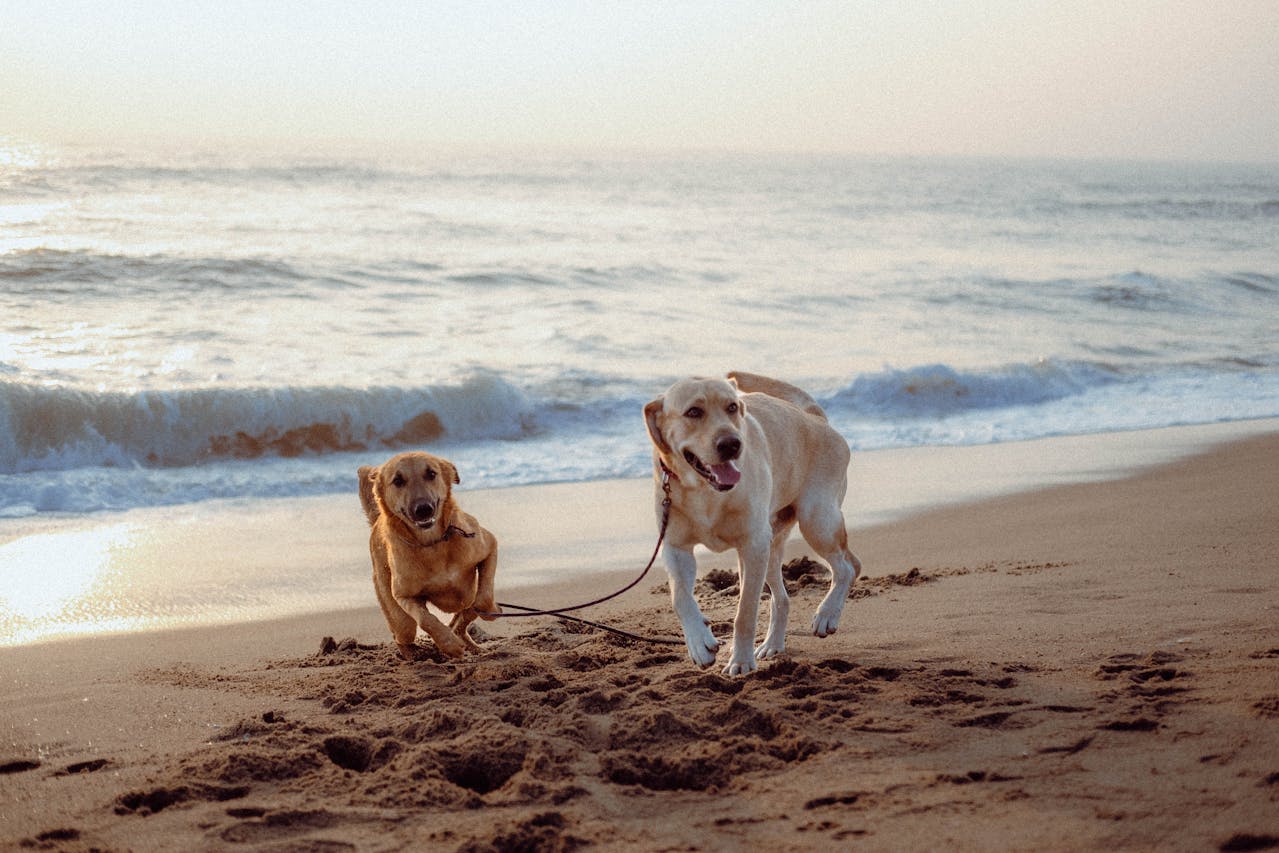Beach Safety for Dogs: Enjoying Florida's Coast Responsibly with Your Pet

There's nothing quite like watching a dog see the ocean for the first time. Pure joy takes over as they sprint straight into the waves like they've discovered the world's greatest water bowl. Florida beaches seem perfect for dogs - all that sand to dig in, waves to chase, interesting smells everywhere.
Then reality hits. Hard.
Every summer brings stories of dogs getting sick from drinking salt water or limping because hot sand burned their paws. Owners feel terrible afterwards - they just didn't know these things could happen. Here's what every dog owner should know before heading to Florida beaches.
1. That Sand Will Burn Paws
Florida sand in the middle of the day reaches temperatures hot enough to cook an egg. This isn't an exaggeration - the sand can reach 150 degrees or more during peak hours.
Dogs trust their humans completely. They'll keep walking on burning sand because they think their owners know what they're doing. By the time they start limping, real damage has already happened.
The hand test works every time. Put a bare hand flat on the sand and count to seven. Can't handle it? Neither can any dog. Severe paw burns sometimes get infected so badly that families face heartbreaking decisions about pet cremation when treatment options run out.
Early morning or late afternoon visits work best. Before 10 AM, after 4 PM. The sand's pleasant then, instead of torturous. Dog boots work great if dogs will wear them, and beach umbrellas or pop-up tents give dogs much-needed shade breaks.
2. Ocean Creatures Don't Like Dog Visitors
Florida waters are packed with jellyfish, man-of-war, sea urchins, and stingrays. Dogs stepping on sharp spines or getting stung happen more often than people think. A curious sniff at the wrong creature can turn a perfect beach day into an emergency vet visit.
Leashes work best near rocky areas, piers, or anywhere sea creatures might gather. During jellyfish season - all summer in Florida - checking beach condition reports before leaving home saves trouble later. Lifeguards post warnings when stinging creatures are particularly active.
A basic first aid kit helps handle minor emergencies. Vinegar neutralizes jellyfish stings. Tweezers remove spines or debris from paws. Most beach trips won't need these supplies, but having them available brings peace of mind when something does go wrong.
3. Dogs Overheat Dangerously Fast
Dogs wear permanent fur coats and can't sweat like humans. Panting is basically their only way to cool off, and it's not great at the job. Dogs with light fur or short coats? They're sitting ducks for sunburn and heat stroke. Slap some dog sunscreen on their nose, ear tips, and that pink belly skin.
Wet towels are like magic for hot dogs - not the food kind. Pack a cooler with ice and towels. When your dog starts breathing hard, wrap them up in something cold. It's like hitting a reset button on their body temperature.
Regular shade breaks matter even when dogs seem perfectly fine. Dogs are terrible at knowing their limits - they'll play until they collapse from heat exhaustion.
Conclusion: Planning Prevents Problems
Beach days with dogs can be wonderful experiences. But Florida beaches present unique challenges - scorching sand, dangerous marine life, brutal sun exposure. When serious accidents happen, families sometimes must make devastating decisions about pet euthanasia if injuries prove too severe for successful treatment.
Most problems are completely preventable, though. Going at cooler times, watching for hazards, and bringing proper supplies means dogs get to have amazing beach adventures without anyone ending up at the emergency vet.




